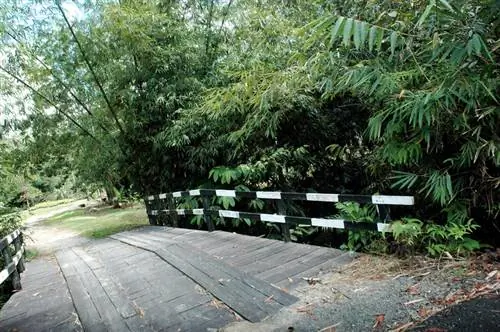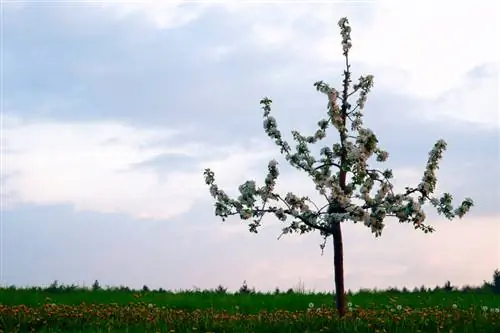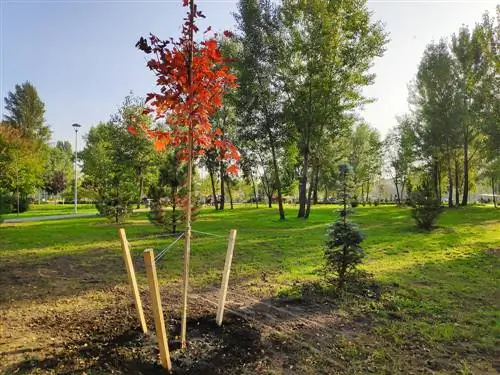- Author admin [email protected].
- Public 2023-12-16 16:46.
- Last modified 2025-01-23 11:20.
In recent years, numerous new magnolia cultivars have conquered the market, the final size of which naturally cannot yet be determined with certainty. In general, it is quite difficult to estimate how big a magnolia will grow and how much space it will take up. This means that the probability that you will have to move a magnolia tree that has already been planted is quite high - after all, pruning of these capricious plants should be avoided if possible.

How can I move a magnolia?
To successfully transplant a magnolia, choose the right location (partial shade, sheltered from the wind), prepare the acidic and humus-rich soil and carefully dig around the delicate roots. Plant in fall (deciduous magnolias) or spring (evergreen magnolias).
Selection of location
So if the old location of your magnolia has become too small, you will have to look for a new place. Choosing the right location is very important, because magnolias are true divas and will quickly resent a less than optimal location. A partially shaded to not completely sunny spot in a southern, southeastern or southwestern orientation, which is also well protected from wind, is perfect. However, it is not advisable to choose a location in full sun, because magnolias in such places often bloom very early in spring - and are therefore exposed to the risk of their flowers dying due to night frosts.
Make soil improvement
The right soil is just as important as the right location. Magnolias need nutrient and humus-rich, slightly acidic to acidic soil. Most magnolia species - there are only a few exceptions - do not tolerate calcareous, i.e. H. sandy or alkaline soil. Heavy, clayey soils also require improvement before relocation. To do this, mix the excavated material from the planting hole with some rhododendron or ericaceous soil, in a ratio of 1:1 depending on the nature of the soil.
Relocate magnolia
Magnolias develop very branched, fleshy roots that spread flatly. For this reason, before digging up the plant, take a close look at where its roots reach so as not to injure the sensitive parts.
- Now measure the root ball carefully with your eyes. The new planting hole should be at least twice as deep and twice as wide.
- Place the magnolia in the planting hole and fill it with the substrate mixture.
- Do not add compost because the rhododendron soil is already pre-fertilized.
- Tamp the soil firmly, but due to the shallow roots it is best to avoid tamping.
- Water the tree well.
The best time to transplant is autumn, when the magnolia has already shed its leaves. Evergreen magnolias, on the other hand, should be planted in spring if possible, before flowering.
Transplant potted magnolias once a year
Remember that even potted magnolias need a larger container from time to time - the bigger the better. After all, these plants require an immense amount of space and the roots want to spread. It is optimal to repot the magnolia once a year to a maximum of every two years.
Tips & Tricks
If you propagate your magnolia by lowering or mossing, leave the young plants with the mother plant for as long as possible - if possible, only separate and move them after one to two years.






